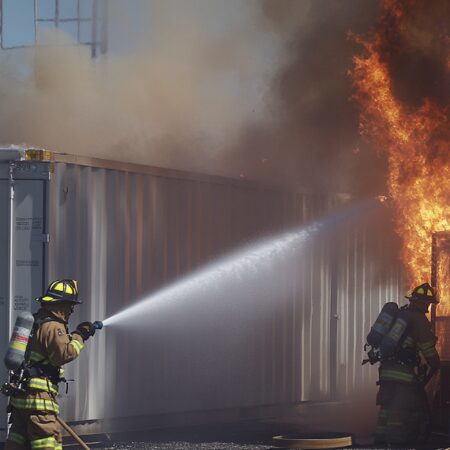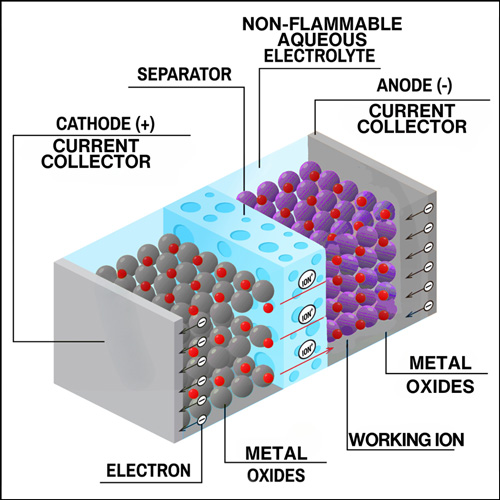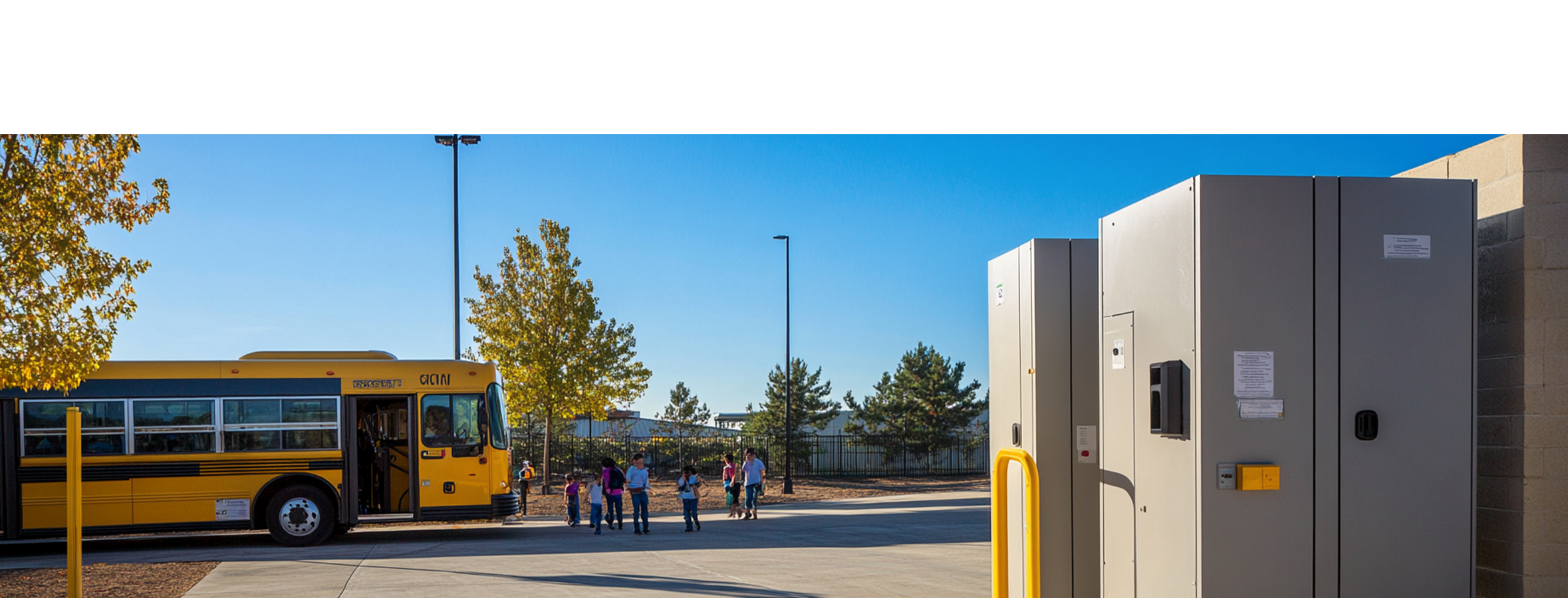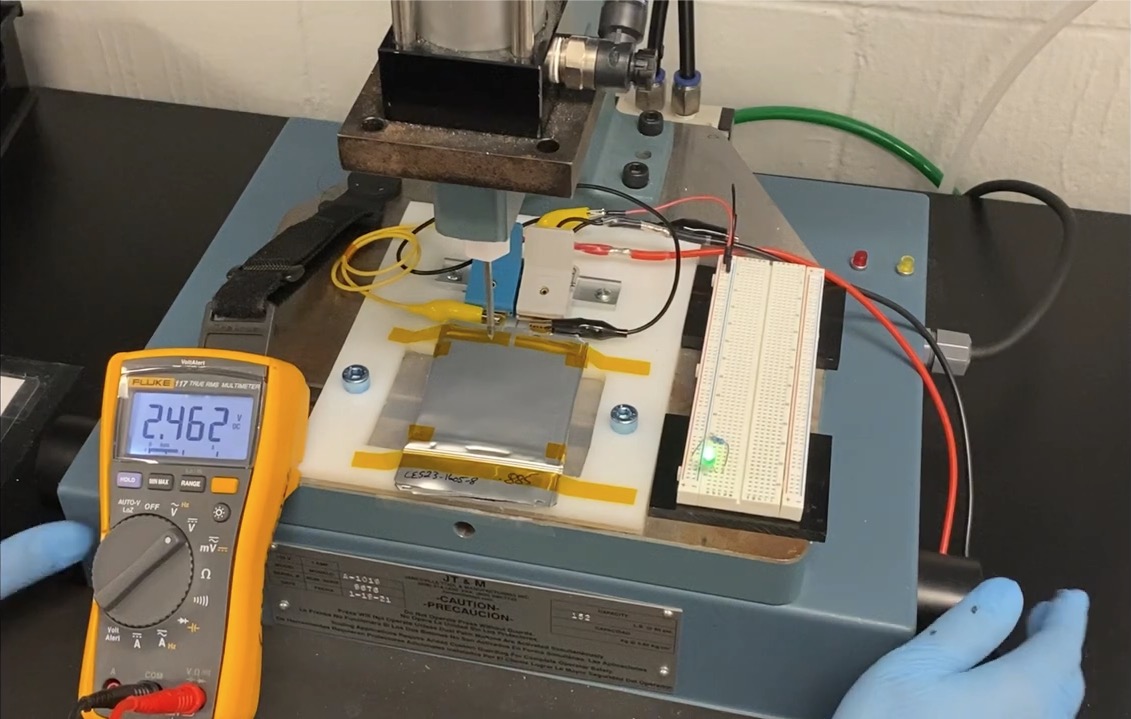Alsym Green: no fires, no explosions, no toxic gases
Alsym Green is an inherently non-flammable, non-toxic, non-lithium battery chemistry. With a water-based electrolyte and containing no lithium, cobalt, or organic solvents, Alsym Green provides a level of safety that is desperately needed but can’t be met by lithium-ion. This makes it the only high-performance option that’s truly viable for urban areas, residences, data centers, and hazardous environments such as chemical plants, oil and gas facilities, steel mills and defense applications.
The problem with lithium-ion for BESS

This risk is especially significant when it comes to stationary storage. A single 20′ storage container can have 100x the energy capacity of an EV battery, and a single battery storage plant may have hundreds of containers co-located at a single site. At this level of capacity and concentration, a fire can quickly spread from one container to neighboring ones–to catastrophic effect.
Lithium-ion BESS fires are far worse than conventional ones. They burn at temperatures more than twice that of a conventional fire, spread in seconds, and can violently explode. They can’t be stopped until the battery cells cool down enough to end the thermal runaway process, and can’t be extinguished via conventional firefighting methods. Fires also release toxic gases such as hydrogen fluoride (HF), carbon monoxide, and other volatile organic compounds, posing serious risks to human health and the environment.
In most situations, the recommended solution is to isolate the fire, evacuate the immediate area, and then let the fire burn itself out, which can take days (or weeks). For example, a 2023 warehouse fire near San Diego, California took 17 days and 8 million gallons of water to extinguish. This strategy might be acceptable in rural or remote areas where the impact is less severe, but poses a critical danger in cities and suburbs. As more communities experience the reality of these fires, regulators and permitting authorities are becoming reluctant to deploy lithium-ion batteries.
Regulators and authorities having jurisdiction (AHJs) are now in the unenviable position of trying to balance concerns about human health and safety with concerns about the health and safety of our planet. All of this has the potential to set back or derail net-zero decarbonization goals–something the world cannot afford.
Alsym Green is inherently non-flammable

Alsym Green’s electrolyte is water-based and non-flammable, and does not include any of the organic solvents used in lithium-ion batteries. This significantly reduces the risk of fires or explosions, especially under extreme conditions like high temperatures, overcharging, or physical damage.
The use of non-toxic additives ensures that the electrolyte does not pose a chemical hazard to humans or the environment. In the case of leaks or spills, the risk of harm to operators, first responders, or ecosystems is minimal compared to the corrosive or toxic chemicals used in other battery types.
Since the electrolyte is non-toxic, end-of-life disposal is safer and more environmentally friendly. It also reduces the complexity and cost of recycling procedures.
Non-toxic at every step
- Sourcing and Manufacturing | | |

Sourcing and Manufacturing
Sourcing and Manufacturing
Environmental concerns arise from the extraction and processing of critical raw materials like lithium, cobalt, and nickel. Mining for these metals causes significant ecological degradation, such as soil erosion, water contamination, and loss of biodiversity. Cobalt mining, in particular, has been linked to hazardous working conditions and child labor in regions like the Democratic Republic of the Congo. The refining and processing stages of these metals are energy-intensive, contributing to a high carbon footprint and further environmental degradation.
The manufacturing process for lithium-ion batteries poses several health and safety risks, largely due to the use of hazardous chemicals like N-Methyl-2-pyrrolidone (NMP), a solvent in the electrode production process. NMP can lead to reproductive issues in both men and women as well as posing other long-term health risks. Additionally, the battery production environment requires stringent safety protocols due to the potential for fires and explosions, given the flammability of the electrolyte materials used in lithium-ion batteries.
Lithium hexafluorophosphate (LiPF6) is another toxic material used in lithium-ion battery electrolytes. LiPF6 can pose several health and safety risks, especially if the battery is damaged or exposed to heat. When LiPF6 is exposed to moisture, it can decompose into harmful substances such as hydrofluoric acid (HF) and phosphorus pentafluoride (PF5), both of which are highly corrosive and toxic. Inhalation, ingestion, or skin contact with these decomposition products can cause serious harm, including respiratory, skin, and eye irritation or damage.
In contrast, Alsym Green battery manufacturing eliminates these risks by avoiding the use of hazardous chemicals like NMP. It is designed to be safer for workers, using materials that are both non-flammable and non-toxic. Additionally, Alsym Green’s metals and components are sourced from domestic or free trade partners, avoiding the environmentally destructive extraction practices associated with lithium, cobalt, and nickel mining. This results in a safer, more sustainable, and ethically sourced manufacturing process.

End of Life
End of Life
At the end of life, lithium-ion batteries pose significant toxicity concerns, especially if not properly recycled or disposed of. These batteries contain hazardous metals such as cobalt and nickel, as well as organic solvents and lithium salts, all of which can leach into the environment when improperly discarded. In landfills, the degradation of battery materials can lead to the release of toxic substances, which can contaminate soil and groundwater, posing long-term environmental and health risks.
Recycling processes for lithium-ion batteries can also be hazardous. Many recycling methods involve high temperatures or strong chemicals to recover valuable metals, releasing toxic fumes and creating hazardous waste. If the recycling process is not well-regulated, these byproducts can pollute the air, water, and soil, adding to the environmental burden. Furthermore, improper handling during battery collection, transportation, or dismantling can cause battery fires, increasing the risk of toxic chemical exposure.
In contrast, Alsym Green batteries are designed to avoid these end-of-life toxicity issues. Alsym Green does not contain lithium, cobalt, or other hazardous materials found in lithium-ion batteries, which significantly reduces the risk of environmental contamination during disposal. The materials used in Alsym Green batteries are non-toxic, meaning that even if improperly disposed of, they do not pose a risk to soil or groundwater. Moreover, Alsym Green’s simplified, safer recycling process further ensures a lower environmental impact compared to the complex and hazardous recycling of lithium-ion batteries.

Environmental Risk
Environmental Risk
Lithium-ion batteries pose toxicity concerns in the event of damage, overheating, or fires. They contain hazardous materials such as lithium salts, cobalt, nickel, and organic electrolytes, which can become dangerous if they leak or combust. Fires release toxic gases such as hydrogen fluoride (HF), carbon monoxide, and other volatile organic compounds, posing serious risks to human health and the environment.
Extinguishing these fires often requires large amounts of water or special fire suppression agents. This water can become contaminated with hazardous battery chemicals, leading to groundwater contamination. The leakage of heavy metals and harmful compounds into the environment during a fire or battery disposal can persist for years, posing long-term risks to ecosystems and drinking water sources.
In contrast, Alsym Green batteries significantly reduce environmental concerns by using non-flammable, non-toxic materials. The materials used in Alsym Green batteries do not pose a risk to groundwater or the environment, and in the event of damage, there is no release of hazardous gases. This makes Alsym Green a much safer option during both normal operation and emergency scenarios, providing peace of mind for stationary energy storage applications.


